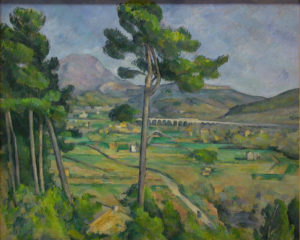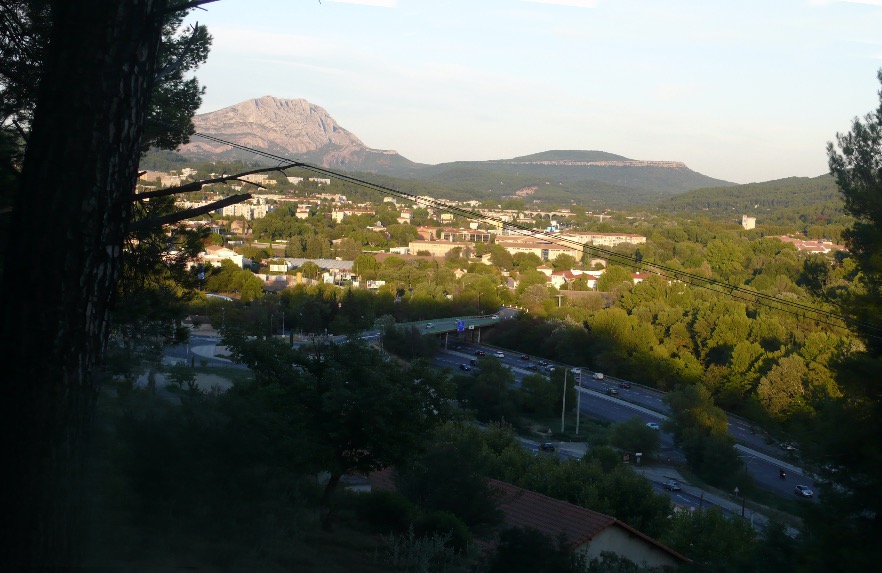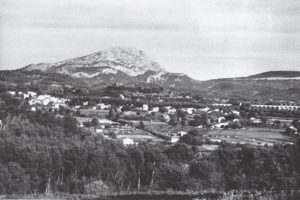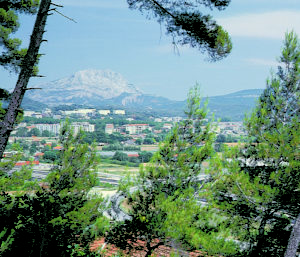R511 – La Montagne Sainte-Victoire vue de la colline de Montbriand II, 1882-1885 (FWN185)
Pavel Machotka
(Cliquer sur l’image pour l’agrandir)

La Montagne Sainte-Victoire vue de la colline de Montbriand II 82-85
R511 La Montagne Sainte-Victoire vue de la colline de Montbriand II 1882-1885
R511, FWN185
The double bisection of La Montagne Sainte-Victoire vue de la colline de Montbriand II, painted possibly in the mid-1880s[1], makes simple but powerful composition. It is a device so directly effective that it flies in the face of the urbane elegance and subtlety of his Impressionist contemporaries. The bisection dominates the canvas and nearly overrides the accidents and details of the landscape; where the distant viaduct touches the tree instead of passing behind it, it seems to leap forward to join it. Rewald’s photograph was taken from the left of Cézanne’s station, but where Cézanne had stood at the edge of the plateau, as in the color photograph, tall pines do emerge from the slope below and one of them, standing straight, gave Cézanne the impetus for this powerful conception (as it did for four other versions of the motif, in oil, watercolor, and drawing). With the present pines leaning at an angle and the viaduct obscured, the original impact of the site has to be surmised.
The painting is as subtle in the integration of its parts as it is obvious in its central subject: there are in it subtle repetitions of downward-slanting sinuous curves (the top of the central pine, the slope of the mountain, the small branch to the right of the pine trunk, and the path leading to the lower right) and delicate contrasts between adjacent fields of emerald green and yellow-brown. If one were inclined toward a symbolic analysis, and view the lone tree as a metaphor for the painter himself, then one would imagine his solitude — but the bold composition, the affirmative touch and the masterly unity in fact suggest self-possession instead.
Source: Pavel Machotka: Cézanne: Landscape into Art
NB. Voir aussi l’étude de localisation Le Viaduc dans la plaine de l’Arc I, notamment pour le commentaire de la photo de Rewald, prise de plus haut que la position de Cezanne. Noter que les deux photographies ne couvrent pas toute l’étendue du champ du tableau à droite.
[1] Cézanne’s brother-in-law acquired the property in 1885, which makes Cézanne’s visits after 1885 probable, but nothing would have prevented Cézanne from exploring the site earlier.




